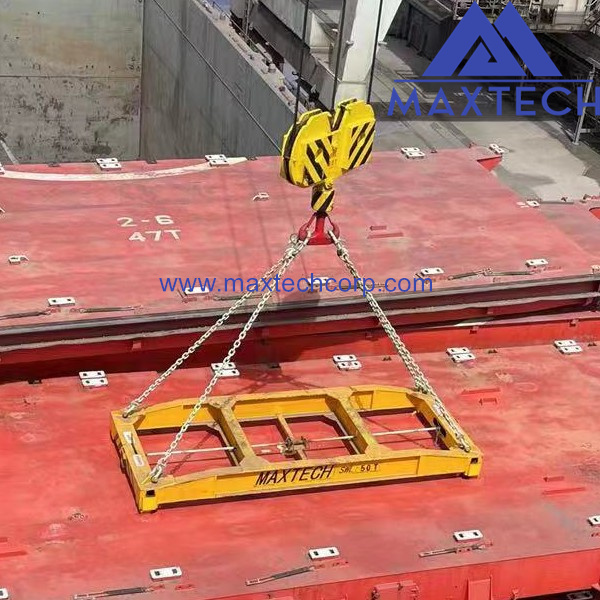A container spreader is an essential piece of equipment used in the shipping and logistics industry. It is a device that is attached to a crane to lift and move shipping containers. There are different types of container spreaders, including semi-auto and electric hydraulic models, each with its own unique features and benefits.
What is a container spreader?
A container spreader, also known as a crane spreader, is a device used to lift and handle shipping containers. It is typically attached to a crane and is designed to securely grip the corners of a container, allowing it to be lifted and moved with ease. Container spreaders come in various designs and configurations, including semi-automatic and electric hydraulic models, to accommodate different types and sizes of containers.

How does a crane spreader work?
A crane spreader works by attaching to the top corners of a shipping container and using its lifting mechanism to securely grip and lift the container. The spreader is attached to the crane’s hook, and the crane operator uses the controls to position the spreader over the container. Once in position, the spreader’s arms are lowered and adjusted to grip the corners of the container securely. The crane then lifts the container, and the spreader distributes the weight evenly, allowing for safe and efficient handling of the container.
Types of container spreaders
Semi-auto container spreader
A semi-automatic container spreader is a type of spreader that requires some manual intervention to attach and detach from the container. It typically features a simple and easy-to-use locking mechanism that allows the operator to secure the spreader to the container with minimal effort. Semi-auto spreaders are popular for their ease of use and reliability, making them a common choice for many shipping and logistics operations.

Electric hydraulic container spreader
An electric hydraulic container spreader is a more advanced type of spreader that utilizes electric and hydraulic systems to automate the process of attaching and detaching from the container. These spreaders are equipped with electric motors and hydraulic cylinders that provide the necessary power to grip and lift the container without the need for manual intervention. Electric hydraulic spreaders are known for their efficiency and precision, making them ideal for handling a large volume of containers in a short amount of time.

Benefits of using a container spreader
Increased efficiency: Container spreaders allow for quick and efficient handling of shipping containers, reducing the time and labor required to load and unload cargo.
Improved safety: By securely gripping the corners of the container, spreaders help prevent accidents and ensure the safe handling of heavy loads.
Versatility: Container spreaders are designed to accommodate different types and sizes of containers, making them suitable for a wide range of shipping and logistics applications.
Cost-effectiveness: The use of container spreaders can help reduce operational costs by streamlining the container handling process and minimizing the risk of damage to cargo.
In conclusion, a container spreader is a vital tool in the shipping and logistics industry, allowing for the safe and efficient handling of shipping containers. Whether it’s a semi-automatic or electric hydraulic model, container spreaders play a crucial role in streamlining container handling operations and ensuring the smooth flow of cargo in ports and terminals. With their ability to increase efficiency, improve safety, and accommodate various container sizes, container spreaders are an indispensable asset for any shipping and logistics operation.

Post time: Mar-18-2024




















